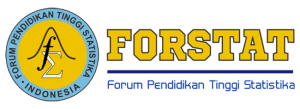INDEKS KERENTANAN SOSIAL PADA ANAK DI INDONESIA: Studi Kasus COVID-19
DOI:
https://doi.org/10.34123/jurnalasks.v12i2.283Keywords:
kerentanan, anak, SoVI, COVID-19, IndonesiaAbstract
Hingga 12 September 2020, dilaporkan setidaknya lebih dari 214.000 kasus dengan 8.650 kematian di seluruh provinsi di Indonesia. Dengan belum tersedianya vaksin COVID-19, Indonesia dan negara lain mengandalkan berbagai kebijakan dan program pemerintah dengan mengedepankan protokol kesehatan untuk memperlambat penyebaran virus. Pada masa pandemi ini, anak merasakan berbagai dampak mulai dari permasalahan kesehatan, kesejahteraan, perkembangan dan harapan masa depan. Berbagai dampak negatif COVID-19 tidak akan dirasakan secara merata oleh semua anak. Anak yang berada pada lingkungan yang rentan kemungkinan akan merasakan dampak yang lebih besar dibandingkan yang lain. Namun, di Indonesia saat ini upaya mitigasi dan penurunan kerentanan tersebut belum didukung oleh informasi tingkat kerentanan sosial khususnya pada anak. Oleh karena itu, penelitian ini diharapkan dapat memberikan gambaran kerentanan sosial atau Social Vulnerability Index (SoVI) pada anak terhadap COVID-19 hingga tingkat kabupaten/kota. Indeks kerentanan sosial pada anak didapatkan melalui analisis faktor. Hasilnya, terdapat empat faktor yang memengaruhi SoVI pada anak yaitu status sosial ekonomi dan kesehatan, struktur keluarga, akses layanan kesehatan dan karakteristik demografi rumah tangga. Penyusunan SoVI yang berfokus pada anak dapat membantu pemerintah bertindak lebih dini ketika pandemi terjadi sehingga dampak yang dirasakan dapat diminimalisasi.
Downloads
References
Adams, S. H., Park, M. J., Schaub, J. P., Brindis, C. D., & Irwin, C. E. (2020). Medical Vulnerability of Young Adults to Severe COVID-19 Illness—Data From the National Health Interview Survey. Journal of Adolescent Health, 67(3), 362–368. https://doi.org/10.1016/j.jadohealth.2020.06.025
Aji, R. H. S. (2020). Dampak Covid-19 pada Pendidikan di Indonesia: Sekolah, Keterampilan, dan Proses Pembelajaran. SALAM: Jurnal Sosial Dan Budaya Syar-I, 7(5). https://doi.org/10.15408/sjsbs.v7i5.15314
Andrew, M. K., & Keefe, J. M. (2014). Social vulnerability from a social ecology perspective: A cohort study of older adults from the National Population Health Survey of Canada. BMC Geriatrics, 14(1). https://doi.org/10.1186/1471-2318-14-90
Bradshaw, S., Chant, S., & Linneker, B. (2017). Gender and poverty: what we know, don’t know, and need to know for Agenda 2030. Gender, Place and Culture, 24(12), 1667–1688. https://doi.org/10.1080/0966369X.2017.1395821
Brooks, S. K., Webster, R. K., Smith, L. E., Woodland, L., Wessely, S., Greenberg, N., & Rubin, G. J. (2020). The psychological impact of quarantine and how to reduce it: rapid review of the evidence. The Lancet, 395(10227), 912–920. https://doi.org/10.1016/S0140-6736(20)30460-8
Cutter, S. L., Boruff, B. J., & Shirley, W. L. (2003). Social vulnerability to environmental hazards. Social Science Quarterly, 84(2), 242–261. https://doi.org/10.1111/1540-6237.8402002
Hair, J. F., Black, W. C., Babin, B. J., & Anderson, R. E. (2009). Multivariate Data Analysis (7th ed.). Prentice Hall.
ILO. (2020). Krisis COVID-19 dan Sektor Informal: Respons langsung dan tantangan kebijakan. 1–36. https://www.ilo.org/wcmsp5/groups/public/---asia/---ro-bangkok/---ilo-jakarta/documents/publication/wcms_744424.pdf
Johnson, R. A., & Wichern, D. W. (2007). Applied Multivariate Statistical Analysis (Sixth). Pearson Education.
Kementerian Kesehatan. (2018). Laporan Nasional Riskesdas 2018. http://labdata.litbang.kemkes.go.id/images/download/laporan/RKD/2018/Laporan_Nasional_RKD2018_FINAL.pdf
Klasen, S., Lechtenfeld, T., & Povel, F. (2015). A Feminization of Vulnerability? Female Headship, Poverty, and Vulnerability in Thailand and Vietnam. World Development, 71, 36–53. https://doi.org/10.1016/j.worlddev.2013.11.003
Lee, P.-I., Hu, Y.-L., Chen, P.-Y., Huang, Y.-C., & Hsueh, P.-R. (2020). Are children less susceptible to COVID-19? Journal of Microbiology, Immunology and Infection, 53(3), 371–372. https://doi.org/10.1016/j.jmii.2020.02.011
Republik Indonesia. 2014. Undang-Undang Nomor 35 Tahun 2014 tentang Perubahan atas Undang-Undang Nomor 32 Tahun 2002 tentang Perlindungan Anak. Lembaran Negara RI Tahun 2014, No. 297. Sekretariat Negara. Jakarta
Sharma, S. (1996). Applied multivariate tecnhiques. USA: John Willey & Sons: Inc., 1–493.
Shekerdemian, L. S., Mahmood, N. R., Wolfe, K. K., Riggs, B. J., Ross, C. E., Mckiernan, C. A., Heidemann, S. M., Kleinman, L. C., Sen, A. I., Hall, M. W., Priestley, M. A., Mcguire, J. K., Boukas, K., Sharron, M. P., Burns, J. P., & Picu, I. C.-. (2020). Characteristics and Outcomes of Children With Coronavirus Disease 2019 (COVID-19) Infection Admitted to US and Canadian Pediatric Intensive Care Units. 2019(9), 868–873. https://doi.org/10.1001/jamapediatrics.2020.1948
Siagian, T. H., Purhadi, P., Suhartono, S., & Ritonga, H. (2014). Social vulnerability to natural hazards in Indonesia: Driving factors and policy implications. Natural Hazards, 70(2), 1603–1617. https://doi.org/10.1007/s11069-013-0888-3
Sprang, G., & Silman, M. (2013). Posttraumatic stress disorder in parents and youth after health-related disasters. Disaster Medicine and Public Health Preparedness, 7(1), 105–110. https://doi.org/10.1017/dmp.2013.22
Badan Pusat Statistik. (2019). Welfare Statistics 2019. Jakarta: BPS.
Sumner, A., Hoy, C., & Ortiz-Juarez, E. (2020). Estimates of the impact of COVID-19 on global poverty. Unuwider, April, 1–9. https://doi.org/10.35188/UNU-WIDER/2020/800-9
UNICEF. (2017). Children in Indonesia: An analysis of poverty, mobility and multidimensional deprivation.
UNICEF. (2020). COVID-19 and Children in Indonesia. April. https://www.unicef.org/press-releases/un-launches-global-
UNISDR. (2008). Indicators of Progress: Guidance on Measuring the Reduction of Disaster Risks and the Implementation of the Hyogo Framework for Action. United Nations Secretariat of the International Strategy for Disaster Reduction (UN/ISDR), 59. http://unisdr.org/files/2259_IndicatorsofProgressHFA.pdf
United Nations. (2020). The Impact of COVID-19 on children. 17.
















